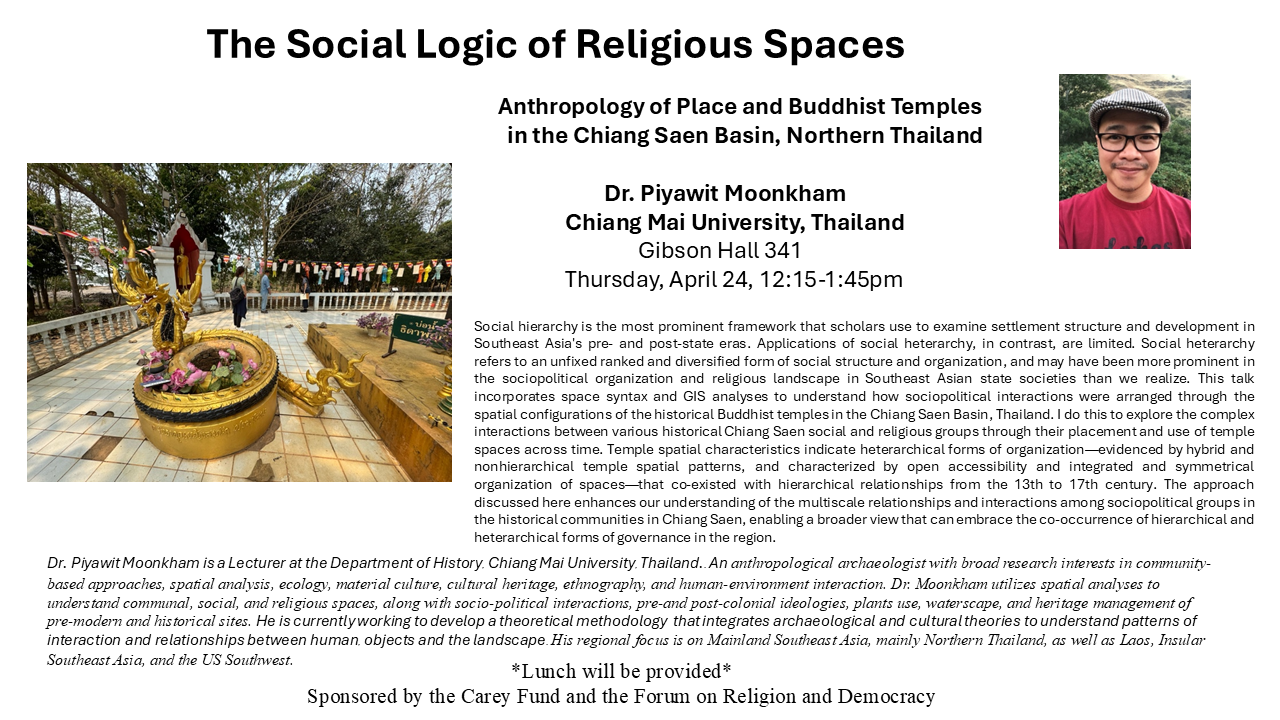The Social Logic of Religious Spaces: Anthropology of Place and Buddhist Temples in the Chiang Saen Basin, Northern Thailand by Piyawit Moonkham (Chiang Mai University, Thailand)

Social hierarchy is the most prominent framework that scholars use to examine settlement structure and development in Southeast Asia's pre- and post-state eras. Applications of social heterarchy, in contrast, are limited. Social heterarchy refers to an unfixed ranked and diversified form of social structure and organization and may have been more prominent in the sociopolitical organization and religious landscape in Southeast Asian state societies than we realize. This talk incorporates space syntax and GIS analyses to understand how sociopolitical interactions were arranged through the spatial configurations of the historical Buddhist temples in the Chiang Saen Basin, Thailand. I do this to explore the complex interactions between various historical Chiang Saen social and religious groups through their placement and use of temple spaces across time. Temple spatial characteristics indicate heterarchical forms of organization—evidenced by hybrid and nonhierarchical temple spatial patterns and characterized by open accessibility and integrated and symmetrical organization of spaces—that co-existed with hierarchical relationships from the 13th to 17th century. The approach discussed here enhances our understanding of the multiscale relationships and interactions among sociopolitical groups in the historical communities in Chiang Saen, enabling a broader view that can embrace the co-occurrence of hierarchical and heterarchical forms of governance in the region.
Lunch provided
Dr. Piyawit Moonkham is a Lecturer at the Department of History, Chiang Mai University, Thailand. An anthropological archaeologist with broad research interests in community-based approaches, spatial analysis, ecology, material culture, cultural heritage, ethnography, and human-environment interaction.